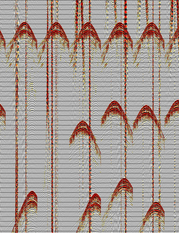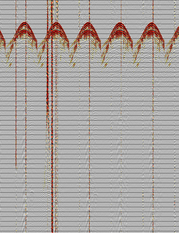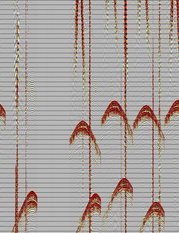SIMULTANEOUS SOURCE DEBLENDING
Simultaneous source acquisition leads to overlapping records, or interference, that must be removed prior to subsequent processing. While conventional noise attenuation methods can partially attenuate simultaneous source interference by estimating the underlying signal, inversion based deblending offers the ability to jointly estimate the signal and interference.
The goal of inversion based deblending is to find unblended shot records that match the observed data when passed to a blending operator. This can be expressed by
d = Γ m
where d are the observed data, Γ is a blending operator, and m are the unblended data. Because Γ compresses the data into a blended format, solving for m is an ill-posed inverse problem that requires additional constraints. To overcome this obstacle we require the solution to be laterally coherent and free from erratic amplitudes. These constraints exploit the incoherence of relative shooting times between adjacent traces to suppress interference.
The coherence of simultaneous source interference is linked to the domain of observation. To illustrate, consider the blended shot record shown in Figure 1. Interference from a later shot is visible at the bottom of the record. Because the time of the interfering shot is constant between neighbouring traces the interference appears coherent. A common receiver gather from the same dataset is shown in Figure 2. Here the time of the interfering shot varies from trace to trace, making the interference appear incoherent.
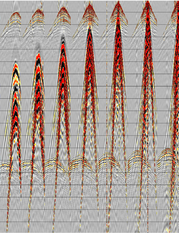
Figure 1. A common shot gather from a simultaneous source survey. The interference appears coherent in this domain.
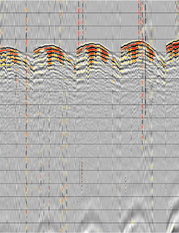
Figure 2. A common receiver gather from a simultaneous source survey. The interference appears incoherent in this domain.
Field data example
Figure 3a shows the colour coded shot times for a simultaneous source survey. Sources with similar shot times can potentially interfere with each other. Another way to visualize this interference is via the blend fold, calculated as the number of shots that occur within a specified time window surrounding each shot. Figure 3b shows the blend fold for this survey calculated on a +/- 5 second window. Many shots in the survey have a blend fold of one (no interference), while relatively few have a blend fold of three or higher.
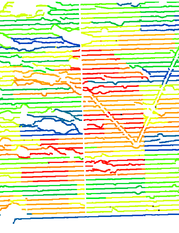
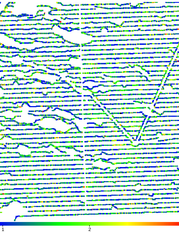
Figure 3. Shot times and blend fold for a simultaneous source survey.
The results of simultaneous source deblending are shown in Figure 4. The blended shot records in Figure 4a display interference from earlier and later shot times. The results after deblending (shown in Figure 4b) demonstrate that much of the interference has been attenuated, while the difference panel (shown in Figure 4c) demonstrates a high level of signal preservation.


